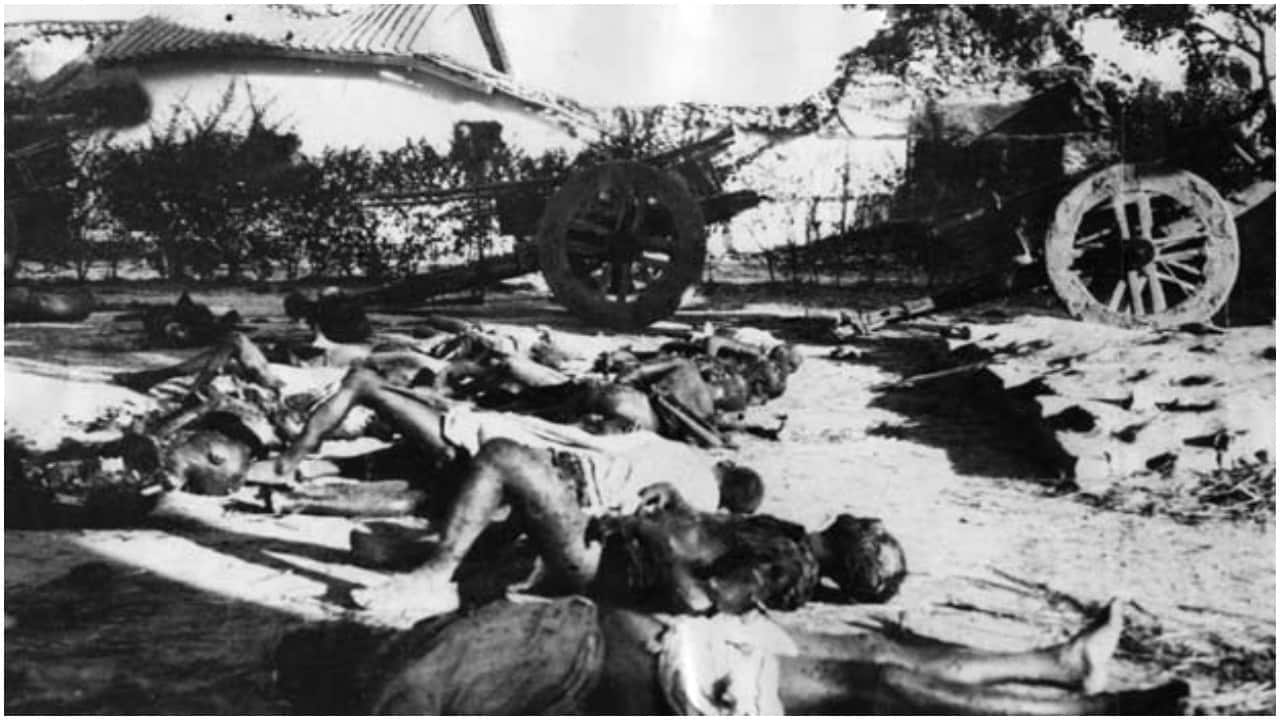
Followers of Mahatma Gandhi, in 1922, burned down a police station at Chauri Chaura which claimed the lives of 23 Police officers. (Image Credits: News 18)
In this August 10, 1942, picture, demonstrators are lying on the ground to avoid clouds of tear gas released by the police when they refused to disperse after protesting against the arrest of Gandhi and other National Congress leaders. (Image Credits: News 18)
The mutiny of 1857 was a revolution of sorts. The image shows a scene from the battle at Cawnpore (Kanpur) where an entire British garrison, including women and children, was wiped out. (Image Credits: News 18)
In this picture, Congress launches the 'Quit India' movement. Demonstrations in Madras calling for a boycott of the Simon Commission. The demonstrators are carrying black banners with the slogan 'Simon Go Back'. (Image Credits: News 18)
In 1930, here we see Mahatma Gandhi, and politician Sarojini Naidu, with a garland, during the Salt March protesting against the government monopoly on salt production. (Image Credits: News 18)
September 1, 1930: An Indian volunteer lies in front of a cartload of imported British clothes being taken to be sold in Bombay, following Gandhi's method of peaceful protest. Dissension by Indian nationalists seeking dominion status for India had reached it's peak by 1930. (Image Credits: News 18)
On February 20 1947, British Prime Minister Clement Attlee announced that India would be granted freedom by June 1948 to the latest. Attlee also said that the future of Princely States would be decided after the date of final transfer is decided. (Image Credits: AP Photos)
In this photo of September 1947, hundreds of Muslim refugees can be seen crowding on top of a train leaving New Delhi for Pakistan. After Britain ended its colonial rule over the Indian subcontinent, two independent nations were created in its place - the secular, Hindu-majority nation of India, and the Islamic republic of Pakistan. The division, widely referred to as Partition, sparked massive rioting that killed up to 1 million, while another 15 million fled their homes in one of the world’s largest-ever human migrations. (Image Credits: AP Photos)
On the midnight of August 14 and August 15 1947, India and Pakistan came into existence. By August 15, India’s first Home Minister Sardar Vallabbhai Patel’s efforts had brought over 560 princely states in the Indian Union with the exceptions of Junagarh, Hyderabad and Jammu and Kashmir. (Image Credits: AFP)
Prime Minister Jawaharlal Nehru looks down on the crowd during India's Independence Day celebrations at Red Fort, New Delhi, India, 15 August 1947. (Image Credits: AP)
This photo shows the new Indian flag, a horizontal tricolour of saffron, white and green, flying from the minaret battlements of the historic Red Fort on 16 August 1947, after being hoisted by Pandit Jawaharlal Nehru, the first prime minister of India. (Image Credits: AP)
Discover the latest Business News, Sensex, and Nifty updates. Obtain Personal Finance insights, tax queries, and expert opinions on Moneycontrol or download the Moneycontrol App to stay updated!









